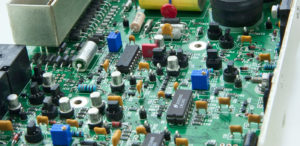Introduction
In an ever-connected world, the demand for wireless connectivity is insatiable. Wi-Fi technology has become the backbone of communication, powering an array of devices and applications. However, as the number of connected devices grows, so does the need for energy-efficient solutions. Enter “low-power Wi-Fi,” a technology designed to strike the perfect balance between connectivity and energy conservation. In this blog, we will explore the world of low-power Wi-Fi in more detail, examining its advantages and disadvantages.
What is Low-Power Wi-Fi?
Low-Power Wi-Fi, also known as Low-Power Wide Area Network (LPWAN), is a wireless communication technology that focuses on optimizing energy efficiency. Its primary goal is to enable long-range connectivity while consuming minimal power, making it an ideal choice for battery-operated devices that require extended periods of operation without frequent battery replacements.
Advantages of Low-Power Wi-Fi:
- Extended Battery Life: One of the most compelling advantages of low-power Wi-Fi is its ability to significantly extend the battery life of connected devices. Traditional Wi-Fi networks consume relatively high amounts of power, which can quickly deplete the batteries of small, battery-powered devices. LPWAN, on the other hand, reduces power consumption, allowing devices to operate for months or even years on a single battery charge. This advantage is particularly valuable for devices deployed in remote or hard-to-reach locations, where frequent battery changes are impractical.
- Cost-Effectiveness: Low-power Wi-Fi technology can lead to cost savings for both manufacturers and consumers. By using smaller and less expensive batteries, the overall production costs of devices are reduced. This cost-effectiveness makes it more feasible for businesses to deploy large-scale IoT networks and for consumers to adopt energy-efficient smart devices without breaking the bank.
- Long Range: LPWAN technology boasts impressive range capabilities, enabling devices to communicate over several kilometres in open areas. This long-range connectivity is particularly beneficial for applications that require extensive coverage, such as agricultural monitoring, environmental sensing, or smart city infrastructure. With its wide coverage area, low-power Wi-Fi can connect devices spread across vast distances, reducing the need for additional infrastructure.
- Ideal for IoT Applications: The proliferation of the Internet of Things has revolutionized various industries, from healthcare and agriculture to industrial automation. Many IoT devices, such as smart sensors and wearables, often transmit small packets of data at infrequent intervals. Low-power Wi-Fi is a perfect fit for these applications, as it enables seamless communication between a multitude of devices without draining their energy resources.
- Interoperability and Standardization: Low-power Wi-Fi standards, like IEEE 802.11ah (HaLow) and 802.11ax (Wi-Fi 6), have been designed with backward compatibility in mind. This means that low-power Wi-Fi devices can be integrated smoothly into existing Wi-Fi networks, promoting interoperability and fostering the expansion of IoT ecosystems without the need for a complete overhaul.
Disadvantages of Low-Power Wi-Fi:
- Limited Data Throughput: The primary trade-off for achieving low-power operation is a reduction in data throughput. Compared to traditional Wi-Fi, LPWAN technology offers lower data transfer rates, making it unsuitable for bandwidth-intensive applications like video streaming or large file transfers. However, for applications that prioritize intermittent data exchange, such as remote monitoring or asset tracking, the lower data throughput may not be a significant concern.
- Susceptibility to Interference: Low-power Wi-Fi operates in unlicensed frequency bands, which can lead to potential interference from other wireless devices operating in the same frequency range. In urban areas or densely populated environments, signal reliability and range may be affected by interference, requiring careful network planning and management to mitigate these challenges.
- Scalability Challenges: While low-power Wi-Fi is an excellent solution for specific use cases, it may not be the best choice for large-scale deployments with high data capacity requirements. As more devices are added to the network, the available bandwidth per device may decrease, affecting overall network performance. In such cases, alternative connectivity solutions, like cellular networks or traditional Wi-Fi, may be more suitable.
- Security Concerns: As with any wireless technology, security remains a concern for low-power Wi-Fi networks. The deployment of IoT devices increases the attack surface, making LPWAN networks potentially vulnerable to security breaches if not adequately protected. Implementing robust security measures, such as data encryption, authentication protocols, and regular software updates, is crucial to safeguarding sensitive information and maintaining the integrity of connected devices.
Conclusion
Low-power Wi-Fi is a compelling solution for specific applications that prioritize energy efficiency and extended battery life. Its advantages, including prolonged device operation, cost-effectiveness, long-range connectivity, and suitability for IoT applications, make it an attractive choice for various industries. However, the limited data throughput, susceptibility to interference, scalability challenges, and security concerns should be carefully considered before implementing low-power Wi-Fi in large-scale or bandwidth-intensive scenarios. As technology continues to advance, low-power Wi-Fi is poised to play an increasingly significant role in shaping the future of energy-efficient wireless communication and powering the Internet of Thin.
Content drafted by Mr.Pavan Gowda, Firmware Developer, RioSH Technologies.


